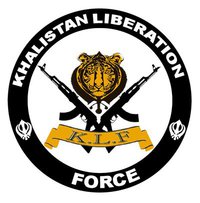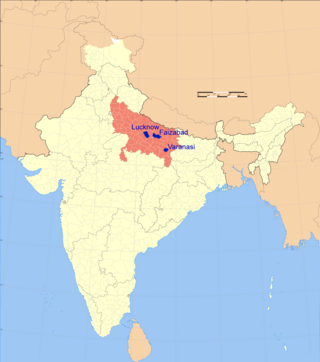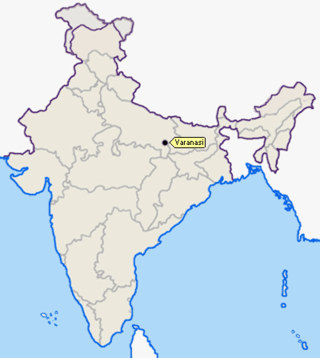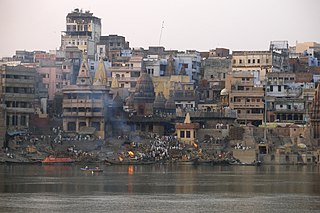
Terrorism in India, according to the Home Ministry, poses a significant threat to the people of India. Compared to other countries, India faces a wide range of terror groups. Terrorism found in India includes Islamic terrorism, ultranationalist terrorism, and left-wing terrorism India is one of the countries most impacted by terrorism.
Events in the year 2006 in the Republic of India.

The 2005 Delhi bombings occurred on 29 October 2005 in Delhi, India, killing 62 people and injuring at least 210 others in three explosions. The bombings came only two days before the important festival of Diwali, which is celebrated by Hindus, Sikhs, and Jains. The bombs were triggered in two markets in central and south Delhi and in a bus south of the city. The Pakistani Islamist terrorist group Lashkar-e-Taiba claimed responsibility for the attacks under the pseudonym of Islamic Inquilab Mahaz. The Indian Mujahideen is also suspected of involvement.

The Khalistan Liberation Force (KLF) is a Khalistani separatist militant organization based in the Indian state of Punjab. Its motive is the creation of a sovereign Sikh state called Khalistan via armed struggle. The KLF is one of the key fighting forces of the Khalistan movement. It was responsible for assassinations, abductions and military engagements with the Indian Armed Forces during the Insurgency in Punjab, India. The KLF is listed as a designated terrorist group by the Republic of India.

Sankat Mochan Hanuman Temple is a Hindu temple in Varanasi, Uttar Pradesh, India and is dedicated to the Hindu God Hanuman. The temple was established by famous Hindu preacher and poet saint Sri Goswami Tulsidas in the early 16th century and is situated on the banks of the Assi river. The deity was named "Sankat Mochan" meaning the "reliever from troubles".

Harkat-ul-Jihad-al-Islami is a Pakistani Islamist extremist, fundamentalist and terrorist organisation affiliated with Al-Qaeda and the Taliban.

The 2006 Mumbai train bombings were a series of seven bomb blasts on 11 July. They took place over a period of 11 minutes on the Suburban Railway in Mumbai, the capital of the Indian state of Maharashtra and the nation's financial capital. The bombs were set off in pressure cookers on trains plying on the Western Line Suburban Section of the Mumbai Division of Western Railway. The blasts killed 209 people and injured over 700 more.
The 2006 Malegaon bombings took place on 8 September 2006 in Malegaon, a town in the Nashik district of the Indian state of Maharashtra, 290 km northeast of Mumbai. The Maharashtra Anti-Terrorism Squad (ATS) initially blamed the bombings on the Students Islamic Movement of India (SIMI), but in a chargesheet filed in 2013 the NIA and ATS joint investigation and involved evidences pointed towards involvement of an extremist group Abhinav Bharat and Pragya Thakur was the main accused in the bombing but she was elected as a member of parliament despite of pending cases against her in the said bombings.
The 2007 Samjhauta Express bombing was a terrorist attack that occurred around midnight on 18 February 2007 on the Samjhauta Express, a twice-weekly train service connecting Delhi, India, and Lahore, Pakistan. Bombs were set off in two carriages, both filled with passengers, just after the train passed Diwana near the Indian city of Panipat, 80 kilometres (50 mi) north of New Delhi. 70 people were killed in the ensuing fire and dozens more were injured. Of the 70 fatalities, most were Pakistani civilians. The victims also included some Indian civilians and three railway policemen.
The Hyderabad bombings refers to the incident in which two bombs exploded almost simultaneously on 25 August 2007 in Hyderabad, capital of the Indian state of Andhra Pradesh. The first bomb exploded in Lumbini Amusement Park at 19:45 hrs IST. The second bomb exploded five minutes later at 19:50 in Gokul Chat Bhandar in Koti, a popular restaurant about 5 kilometres (3 mi) away. At least 42 people were reported to have died in the two bombings. Two more bombs were defused in other parts of the city. According to initial reports, the banned Harkat-ul-Jihad-al-Islami militant outfit of Bangladesh is suspected for the serial blasts.

Six consecutive serial blasts rocked Lucknow, Varanasi and Faizabad courts in Uttar Pradesh on 23 November 2007 afternoon in a span of 25 minutes, in which reportedly many people were killed and several others injured.
2008 Bangalore serial blasts occurred on 25 July 2008 in Bangalore, India. A series of nine bombs exploded in which 1 person was killed and 20 injured. According to the Bangalore City Police, the blasts were caused by low-intensity crude bombs triggered by timers.
Indian Mujahideen (IM) is an Islamist terrorist group which has been particularly active in India. The jihadist group was founded as an offshoot of the Students' Islamic Movement of India (SIMI) by several radicalized members including Iqbal Bhatkal, Riyaz Bhatkal, Yasin Bhatkal, Abdul Subhan Qureshi, Amir Reza Khan and Sadiq Israr Sheikh, among others. It has been active since at least 2005 when it bombed the Dashashwamedh Ghat in Varanasi. It carried out several serial-bombings in Indian cities in the following years notably the 2007 Uttar Pradesh bombings, 2008 Jaipur bombings, 2008 Ahmedabad bombings, 2008 Delhi bombings, 2010 Pune bombing, 2011 Mumbai bombings, 2011 Delhi bombing, 2013 Patna bombings, 2013 Hyderabad blasts and the 2013 Bodh Gaya bombings.
The 13 September 2008 Delhi bombings were a series of five synchronised bomb blasts that took place within the span of a few minutes on Saturday, 13 September 2008 at various locations in Delhi, India. The first bomb exploded at 18:07 IST, and four other blasts followed in succession, with at least 20 people killed and over 90 injured.
The history of Mumbai during the 21st century covers the Indian city of Mumbai in the 21st century.

The 2010 Varanasi bombing was a blast that occurred on 7 December 2010, in one of the holiest Hindu cities, Varanasi. The explosion occurred at Sheetla Ghat, adjacent to the main Dashashwamedh Ghat, where the sunset aarti, the evening prayer ritual to the holy river, Ganges had commenced, on these stone steps leading to it, where thousands of worshipers and tourists had gathered. It killed a two-year-old girl, sitting on her mother's lap, the mother was one of three critically injured, more than 38 other people were injured. In the ensuing panic after the blast, a railing broke causing a stampede leading to an increase in the number of injuries. The bomb was hidden inside a milk container on the Sheetla Ghat. The blast occurred a day after the anniversary of the 1992 Babri Masjid demolition, in which a mosque was demolished at Ayodhya leading to nationwide religious riots killing over 2,000 people. Subsequently, the Islamist militant group, Indian Mujahideen, claimed responsibility of the blast, via email to Indian media. This is also the second terrorism-related incident in the city which was rocked by the serial blasts of 2006, in which 28 people were killed, it included an explosion at the Sankatmochan Temple, some two kilometres away.

Varanasi is a city on the Ganges river in northern India that has a central place in the traditions of pilgrimage, death, and mourning in the Hindu world. The city has a syncretic tradition of Islamic artisanship that underpins its religious tourism. Located in the middle-Ganges valley in the southeastern part of the state of Uttar Pradesh, Varanasi lies on the left bank of the river. It is 692 kilometres (430 mi) to the southeast of India's capital New Delhi and 320 kilometres (200 mi) to the southeast of the state capital, Lucknow. It lies 121 kilometres (75 mi) downstream of Prayagraj, where the confluence with the Yamuna river is another major Hindu pilgrimage site.
Syed Abdul Karim, alias Tunda, was a bomb maker of terror outfit Lashkar-e-Toiba, and was accused of masterminding over 40 bombings in India supported by Pakistani terrorists. He was arrested by Indian authorities on 16 August 2013 from the India-Nepal border at Banbasa. However, the exact timings of this arrest is disputed with various versions being reported.
Darsgah-Jihad-O-Shahadat is an Islamist group based in the southern Indian city of Hyderabad, with branches in the state of Kerala. The group claims to have trained about 50,000 people in self-defence techniques at its training camps in Hazrat Ujale Shah Idgah grounds at Saidabad and Purani Haveli.








